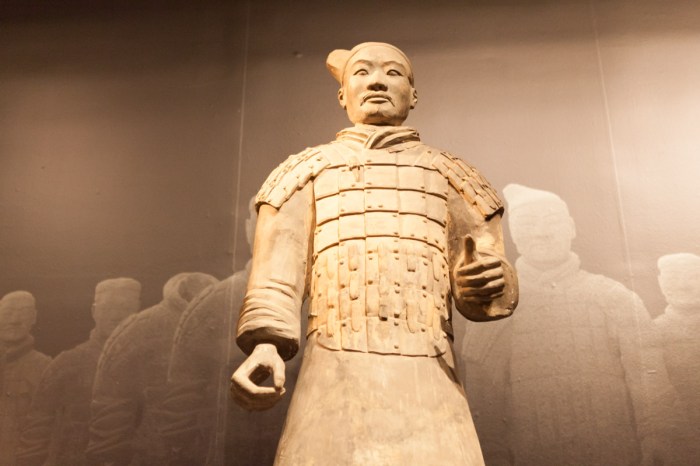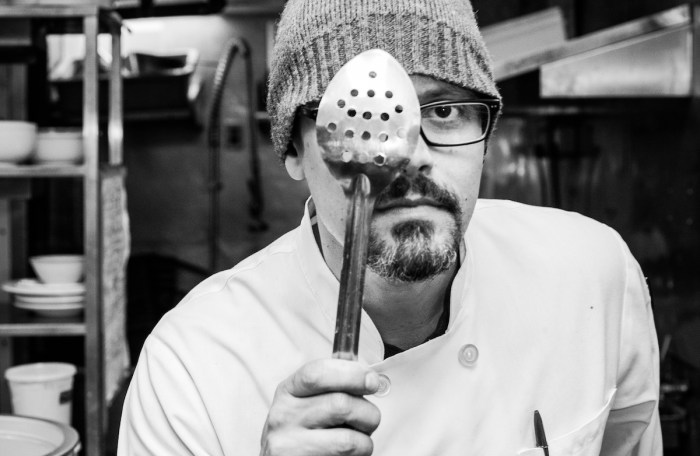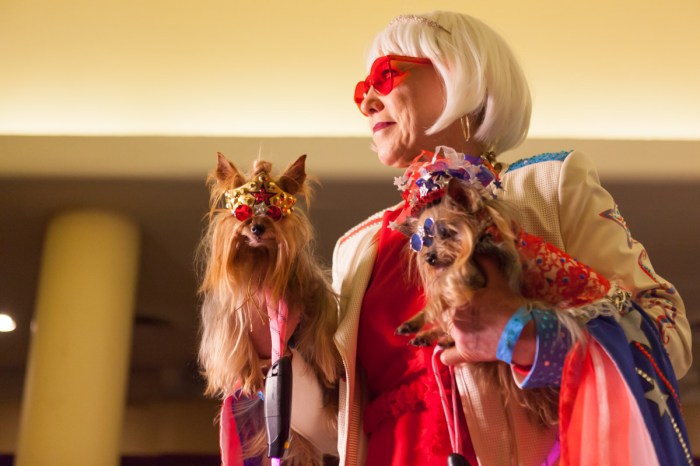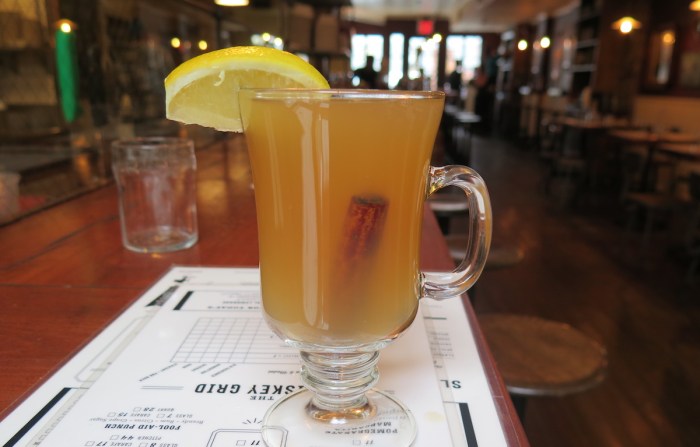Besides a good burger joint, any American city is likely to have a Chinese restaurant. The 170-year history of how that happened is told in Chow: Making the Chinese American Restaurant, the second exhibit opening Nov. 6 at Brooklyn’s Museum of Food and Drink.
“This gets across the sheer ubiquity of Chinese restaurants,” says MOFAD executive director Peter Kim, gesturing to the Great Wall of 7,250 takeout boxes that welcomes visitors, each representing seven Chinese restaurants in the U.S. “There are three times more Chinese restaurants in the country than there are McDonald’s.”
RELATED: Hidden tunnels and drinking games: Everything you need to know about Alamo Drafthouse Brooklyn
The museum’s first exhibit at its 62 Bayard St. home dealt with the engineering of flavor, Chow takes a different approach. “Flavor was very much a science and industry story, and so we wanted to talk about food culture,” he says. “Chinese is a cuisine that borrows from a lot of traditions; it’s truly an American cuisine in a lot of senses.”
The journey to becoming America’s most common ethnic food began under difficult circumstances, and along the way gave rise to a wholly new cuisine. Here’s a taste of the exhibit:
Business of necessity
When Chinese immigrants arrived in the 1800s, it was to build the Trans-Continental Railroad and mine for gold in California. When an economic slump in the 1870s brought development in the West to a halt, many turned to self-employment by opening restaurants, and because of the dwindling numbers of Chinese immigrants sought to appeal to American tastes. One of the vast collection of historical menus at the heart of “Chow” is from a Pell Street establishment in 1910 that even claimed to be the “Chinese Delmonico.”
New Yorkers made it hot
Looking for something new to eat, in the late 1800s NYC’s hipsters ventured into Chinatown and discovered chop suey, which would become the hybrid dish that popularized Chinese American cuisine. “It’s a Cantonese dish of odds and ends, and they went nuts for it,” Kim says. “It spread through the country and by the early 1900s you had chop suey restaurants all over the place.”
Traditionally made with innards and vegetables, the Americanized version swapped in more familiar meats and vegetables like button mushrooms, served with a soy gravy.
A unique cooking method
“There’s a whole system that’s been developed here in the U.S. of velveting your meats, stir-frying it in a wok, building your sauces in the wok and thickening it with cornstarch that’s something unique to Chinese American cuisine,” Kim explains. “It’s never been codified, just passed on orally. It’s surprisingly homogenous, given that these restaurants are independently owned and stretch from Alaska to Florida.” Your ticket includes a tasting at the Chow Culinary Kitchen, where guest chefs like Doron Wong of Northern Tiger will demonstrate these techniques and riff on classic dishes.
Fortune cookies were not originally Chinese
Because it’s not a proper Chinese dinner without it, a fortune cookie machine will bake and fold unlimited hot and fresh treats for visitors (look out for chef collaboration flavors). You can even submit a fortune to be printed inside the cookies on Twitter by tagging @mofad using the hashtag #projectfortune.
Only thing is, the fortune cookie is credited to a Japanese chef in California at the beginning of the 1900s, but they came to be associated with Chinese restaurants during World War II when Japanese Americans were sent to internment camps and Chinese entrepreneurs bought their fortune-cookie factories. “This machine, appropriately enough, was invented by a Korean American,” notes Kim.
See “Chow” at MOFAD Lab, 62 Bayard St., Brooklyn, Friday-Sunday 12-6 p.m. Admission is $14.






















